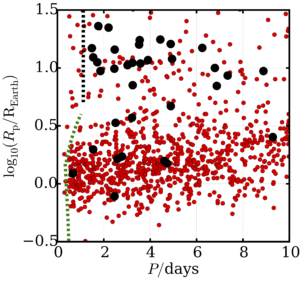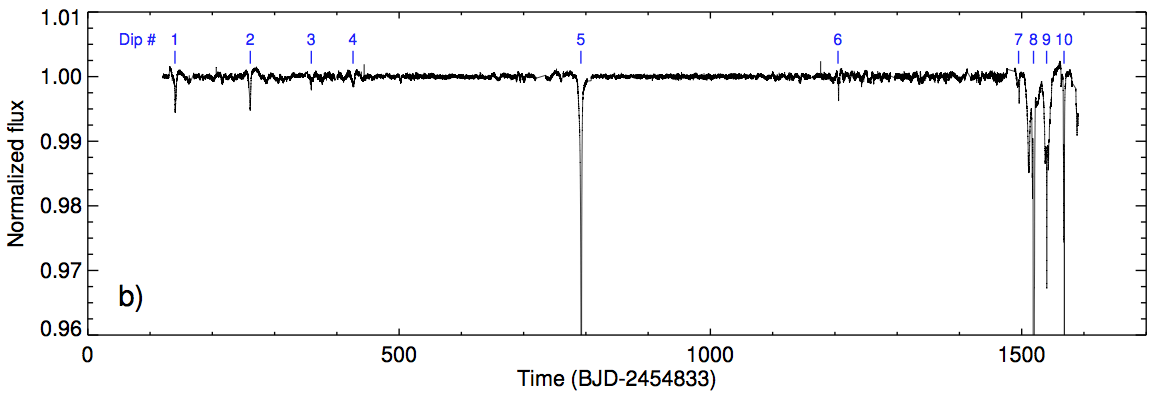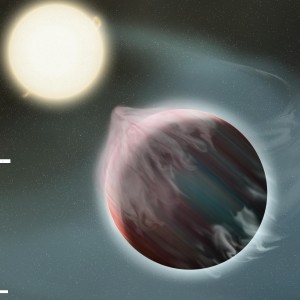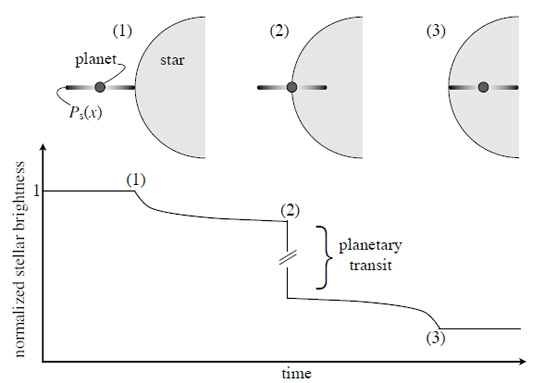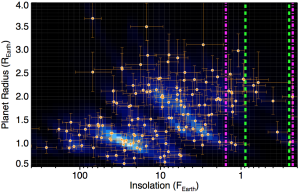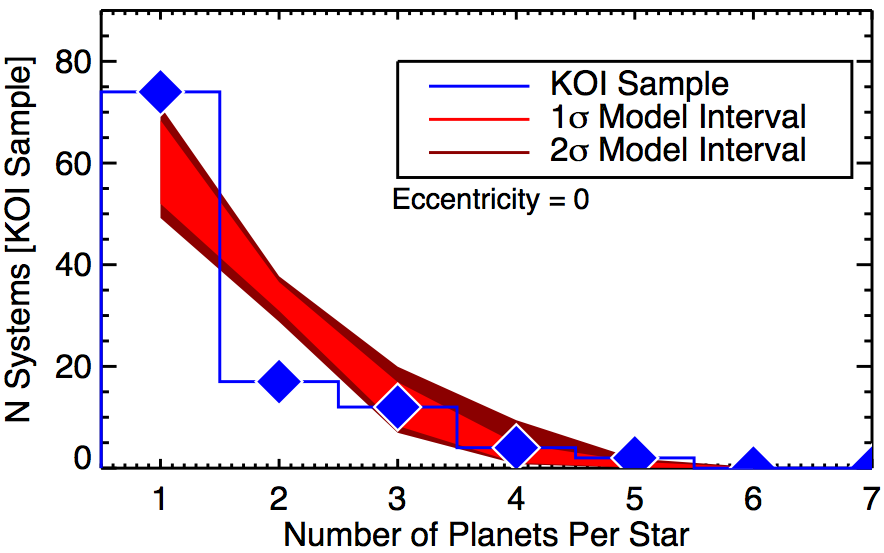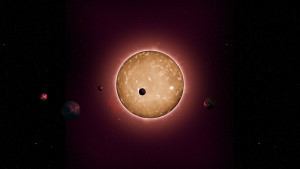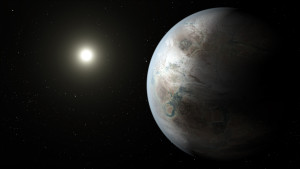
Artist’s conception of Kepler-452 b. From https://en.wikipedia.org/wiki/Kepler-452b#/media/File:Kepler-452b_artist_concept.jpg.
Exciting discovery reported last week of a planet a little bigger than Earth orbiting a star very like our Sun.
The planet, Kepler-452 b, was discovered by the Kepler mission and has a radius 60% larger than the Earth’s. It receives about 10% more light from its star than we do here on the Earth, and it’s probably about 2 billion years older. Together, these qualities mean it may be the most Earth-like exoplanet found to date (although there are lots of other similar planets).
Unfortunately, the host star is so distant, 1,400 lightyears from Earth*, that the usual method for directly estimating the planet’s mass, radial velocity observations, is not feasible. Instead, the planet’s discoverers constrain the planet’s mass by considering a range of compositions, calculating the radius expected for each of those compositions, and comparing it to the observed radius. Based on this analysis, they estimate at least a 49% probability that the planet is rocky, like the Earth.
Based on the amount of light it receives from its host star, there’s a good chance Kepler-452 b is habitable. This means, given a long-list of assumptions about the planet and its atmosphere, liquid water would be stable on its surface. Thus, Kepler-452 b joins a short but rapidly growing list of planets that might host life.
With our success finding potentially habitable planets, it’s probably only a matter of time (maybe just a few more years) before we find a planet that’s not just habitable but inhabited. Children in school right now might be the first generation to grow up in a universe where they know we’re not alone.
Today’s journal club attendees included Jennifer Briggs, Hari Gopalakrishnan, and Jacob Sabin.
—
*This website is the only reference I can find that gives the distance to Kepler-452 b from Earth. The paper itself doesn’t say 1,400 light years. The exoplanet.eu catalog gives a stellar magnitude V = 13.7 (also not given in the discovery paper). Converting that V magnitude to a flux and then using the stellar parameters given in the paper, I estimate a distance of 2,400 light years.
 Boise State’s research computing group is hosting a conference today and tomorrow on scientific computing. Along with several others, I was invited to give a 7-min, lightning talk about our research group‘s use of computing.
Boise State’s research computing group is hosting a conference today and tomorrow on scientific computing. Along with several others, I was invited to give a 7-min, lightning talk about our research group‘s use of computing.